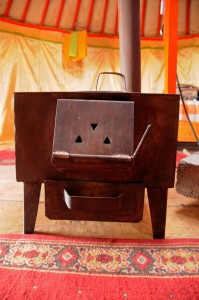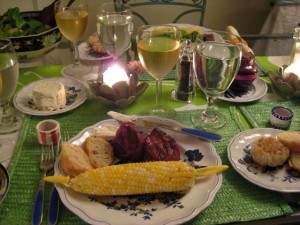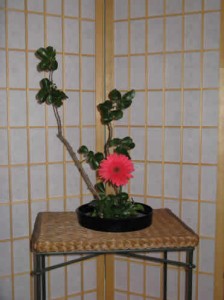Saturday
Featured StoriesShambhala is 80% Atmosphere
By Angela Pressburger
From the beginning, in all cultures, the hearth was the center of the household, the emblem of “home.” The glow of the hearth promised safety, warmth, food and welcome. When we have these, we can rejoice.
Today, with all our appliances, gadgets and entertainment centers, it’s hard to find the heart of home. We may see household more as a trap that takes the time that we might prefer to spend walking in the woods, and the attention that we might prefer to give to practice. We find ourselves far from rejoicing at the simple basics.
Nonetheless, if we stop and think a moment, household is still the basis of society and Society is what Shambhala is all about.
Shambhala Households in the Early 1980s
Back in the early 1980s, Chogyam Trungpa Rinpoche, also known by his Shambhala title the Druk Sakyong, began to talk about Shambhala households. At that time, he suggested that a warrior never has time off and therefore we should not consider our homes as cocoons where we could hide out and put our feet up. At that point, he presented the idea of forming households more in the sense of clans under a common roof. Having other people around in our living situation would help us to hide out less, bear the costs of home more easily, and share the work of cleaning, cooking, etc.
This approach had the potential to transform everyday life more of a celebration, rather than a hassle, which in turn would help to bring the dralas down into our homes. He began to talk about things like vacuum cleaners, assuring us that in his own home the staff did not have to do the vacuuming when he was out. In other words, it was not necessary to pretend cleaning didn’t exist, yet somehow magically happened. It was the ordinariness of creating a household and maintaining it day to day that was the celebration. Some people tried it but many of us preferred our sense of privacy.
At a talk for Shambhala Training directors, the Druk Sakyong once said, “Shambhala society is 80% atmosphere.” It is the way we can share the Shambhala teachings with others. In terms of household, this means that decent living is not about buying expensive furniture, silverware, television, or sheets. The most important part of a household is our welcoming atmosphere, a quality that is uplifted and inviting for ourselves, our friends, and the dralas.
Drala & Cleaning Our Stoves
The dralas come where there is energy, a spark. In a household, that central spark is the hearth which translates into food and warmth. For the flame to glow clean and pure, the hearth has to be clean. And this concept of cleanliness extends from the center throughout our homes. Only then can we begin to embellish and decorate.
In a sense, when we hang a picture or create a flower arrangement, we are echoing that sense of spark from the central fire or hearth. We turn on the burners of our stove so we can cook, make a cup of tea to offer our guests, to share a bit of the warmth of our hearth with them. This is why we traditionally offer at least a beverage when someone visits. That exchange of hearth fire is the basis.
From the hearth, this warmth spreads through our household , even if it is a single room centered on a two-burner Coleman stove. Whether it is a daily family meal, an outdoor barbecue for fifty, or afternoon tea made with an electric kettle, for a single friend, we are extending warmth and welcome. This is the most basic way we can change the atmosphere of our world from one of privacy and exclusion to inclusion and radiation.
Angela Pressburger, aka Angela Gwynn John, was Shambhala International’s Head of Decorum from 1987 – 1992. She is an ex-Governor of the Council of Warriors and the co-author of The Decorum of Shambhala. In 1990, she received the Order of Elegance from The Kongma Sakyong for her work with his father, the Druk Sakyong. As her alter ego, she is the author of “Shambhala at the Movies” for the Shambhala Times.
Photo Credits: Mongolian hearth by Jonna Fleming; dinner table by David Brown; flower arrangement from workshop led by Stéphane Bédard.







